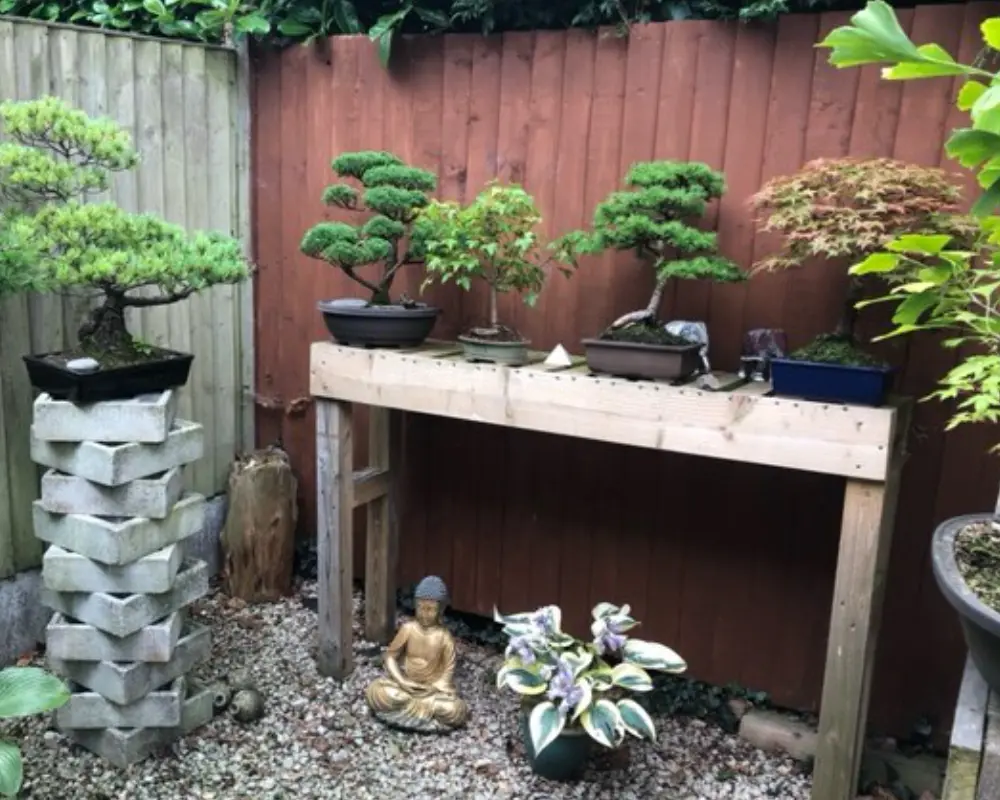Simplicity, elegance and beauty are the foundations of the ancient art of “bonsai”, meaning “planted in a container”. Linda Ridpath has grown bonsai trees for 40 years and brought some of her beautiful trees for us to see at Cleobury Gardeners in July.
Bonsai originated in China over 2,000 years ago, before moving to Japan by the twelfth century. Japanese bonsai styles were influenced by Zen Buddhist philosophy and bonsai trees can often be found in Zen gardens. By the nineteenth century bonsai had reached Europe and featured in an international exhibition in London in 1862. Bonsai remains popular across the world today, with the trees ranging in height from just over a metre tall down to tiny trees 1 or 2 inches in height. There are lots of rules that apply to traditional Japanese bonsai, but you don’t need to know or understand these rules to enjoy making and growing bonsai trees.
Linda demonstrated how to transform a small, pot grown Acer into a bonsai tree. The plant was originally bought as a sickly specimen from a garden centre and grown on in a pot for 1 – 2 years.
Linda had chosen a small oval bonsai pot which she prepared by inserting a wire through the drainage holes to secure the trunk of the tree in its new pot. Fine mesh was used to cover the drainage holes to prevent pests from entering the soil from below (a trick also useful for hostas!). Garden grit covered the mesh to ensure good drainage and a small amount of growing medium was added.
Most of the roots were removed from the Acer and the soil was raked out. The remaining roots (about 1/3) were squeezed into the chosen bonsai pot and growing medium was pushed well between the roots using a chopstick. After securing the trunk with the wires, the tree was given a light prune and was already beginning to resemble a bonsai tree!
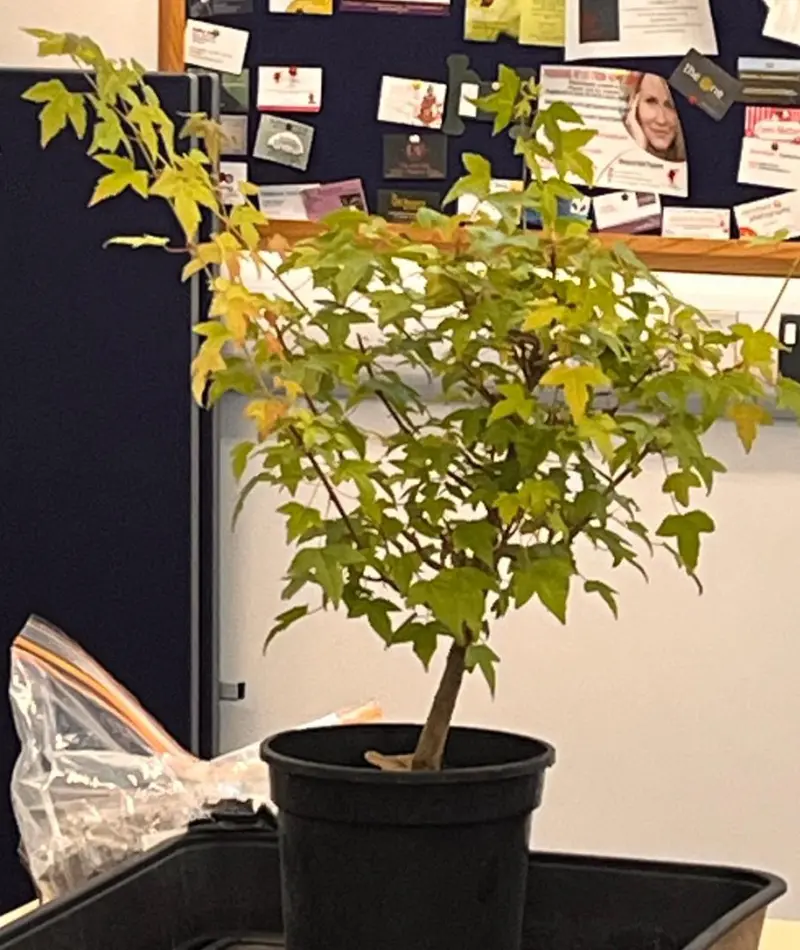
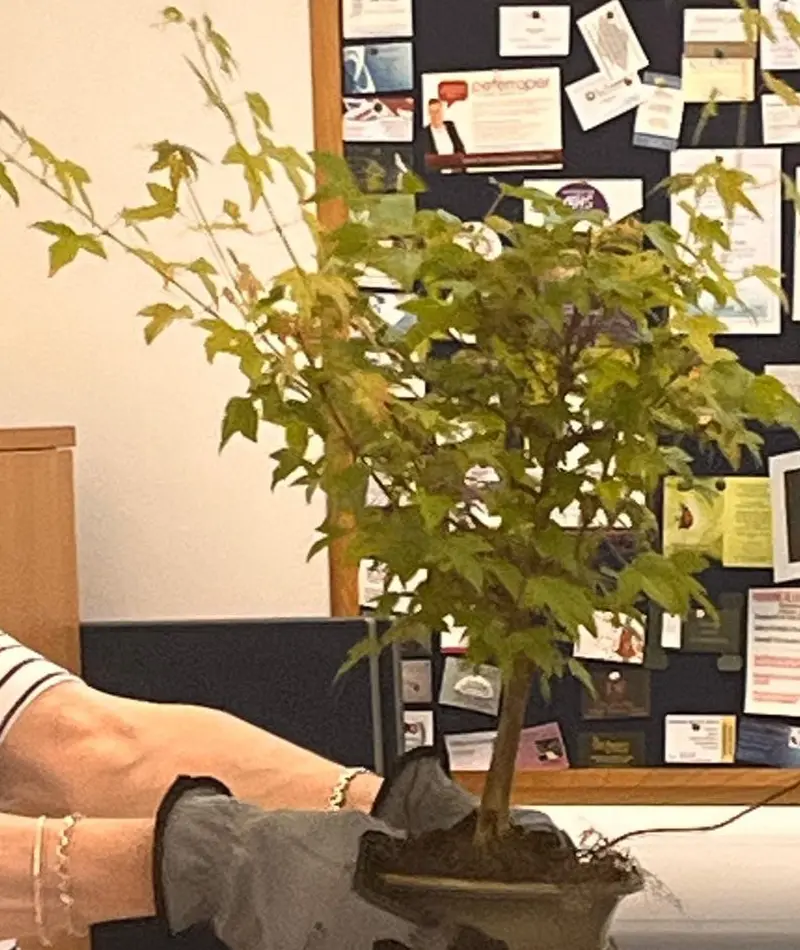
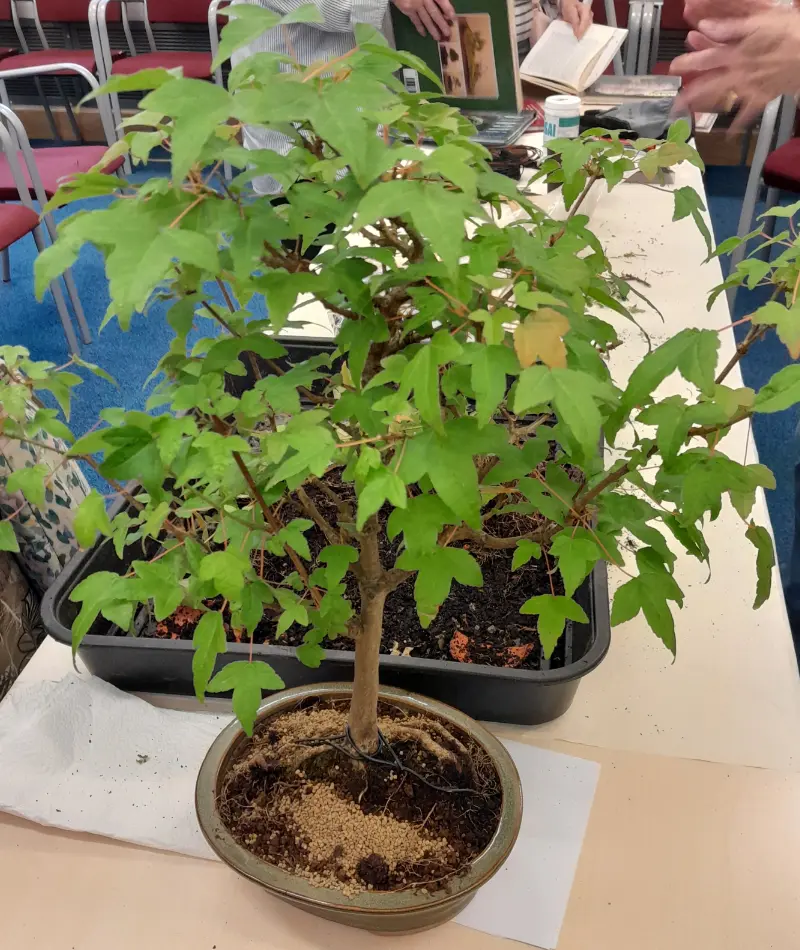
This bonsai Acer will live outside along with Linda’s other bonsai trees. It will need care and maintenance but should live for decades in its tiny pot.
Choosing Your Tree and Shape
The act of restricting a tree’s roots will tend to make the leaves, flowers and any fruit or cones smaller, but not by much. Trees with larger leaves will probably not result in a beautiful bonsai, so choose one with naturally smaller leaves or needles. The tree you choose will behave in a similar way to one growing naturally (so deciduous trees will lose their leaves in winter and flowers and fruits or cones will be produced).
Once you have decided on a species of tree, think about the shape that you want it to take. Wires can be used to bend the branches to create the shape that you want. The following are examples from Linda’s collection:
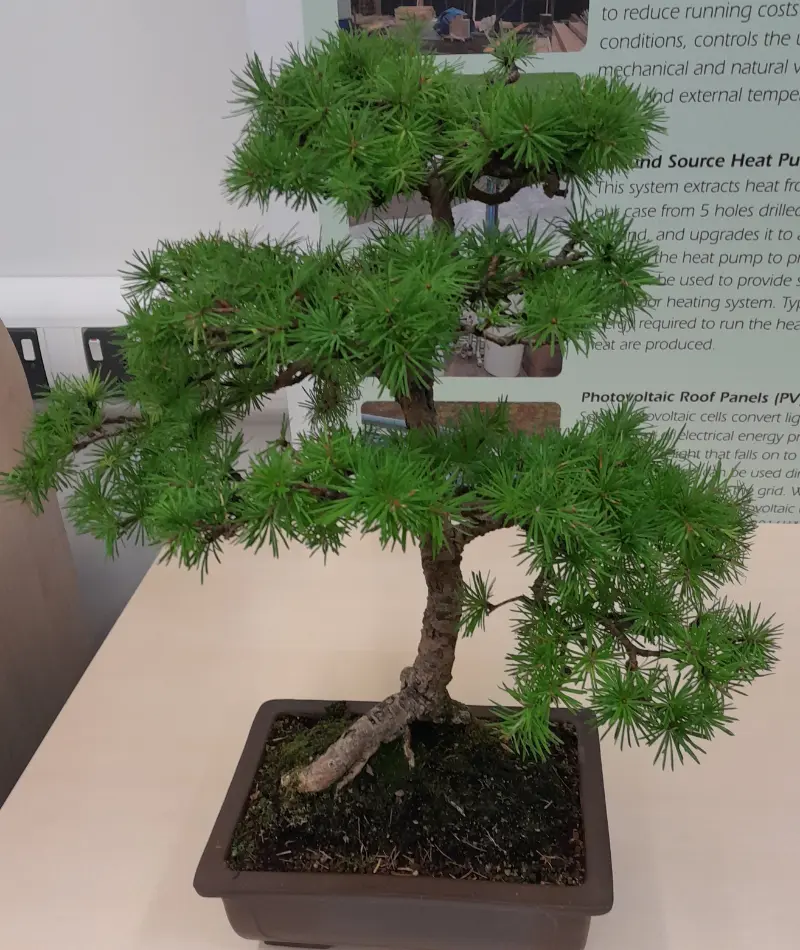
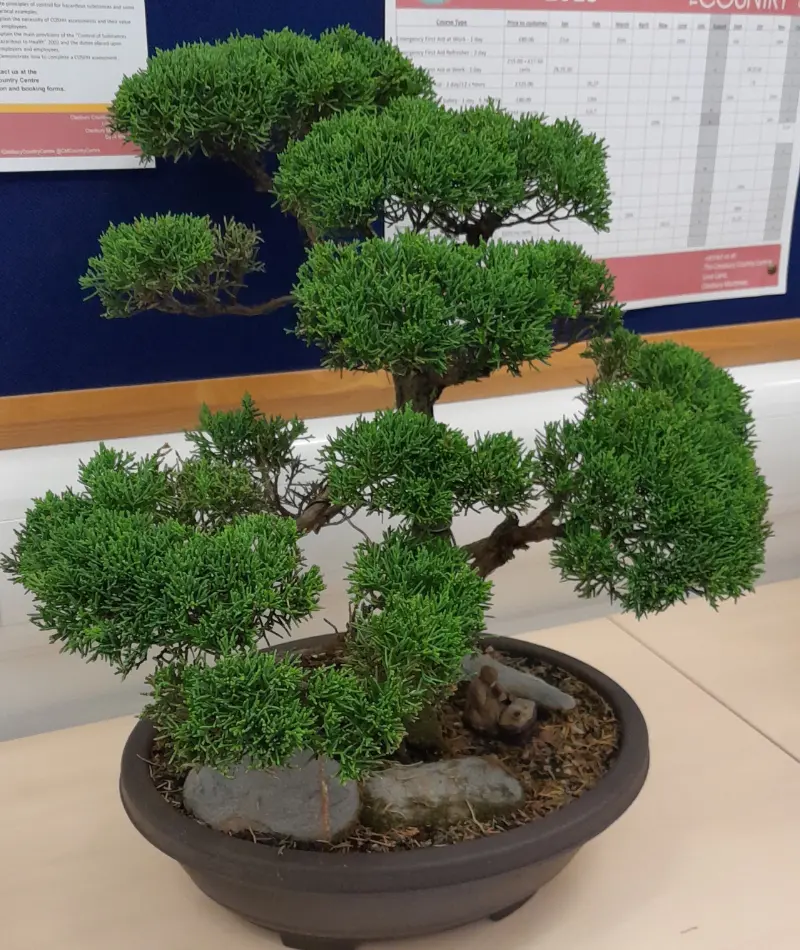
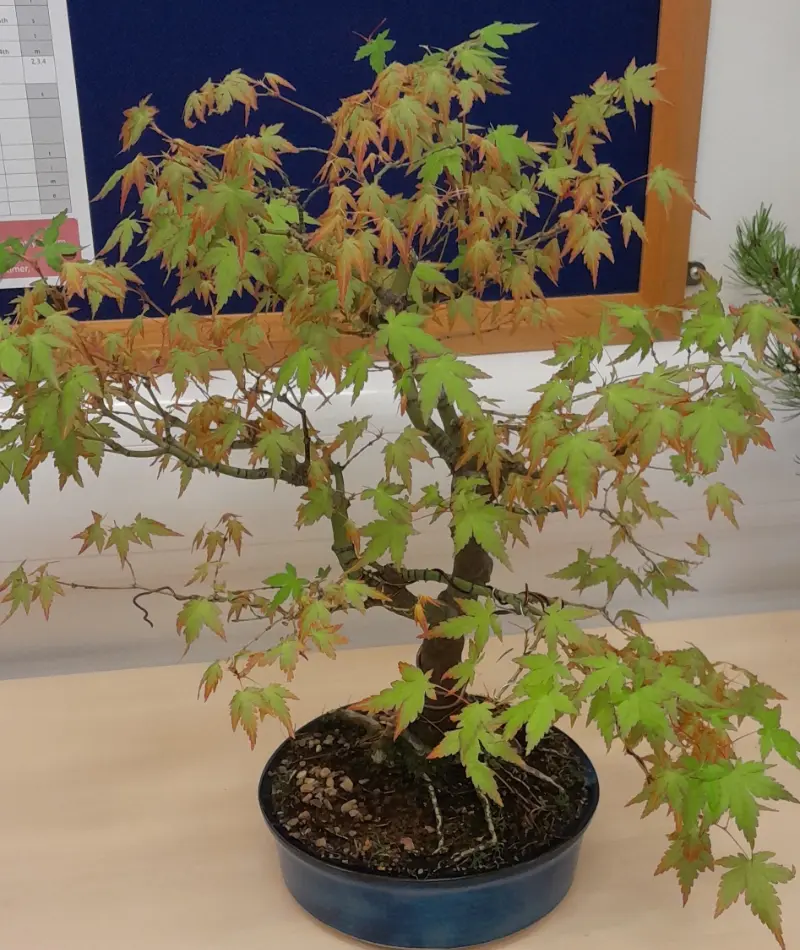
Other tree species to consider include Ginkgos, which were the first trees Linda used, Pines and Cotoneaster (e.g., to create a cascade form).
There are rules on form and shaping in traditional bonsai. While you don’t necessarily need to follow these, some are sensible and will make for a more beautiful tree. For example, remove crossing branches or branches growing inwards.
The roots at the base of the tree are often left exposed and you can add moss or other substrate to enhance the appearance in the pot. You can even create a landscape in a pot using several trees and you can accessorise to complete your landscape!
Bonsai Pots and Tools
Bonsai pots come in various shapes (oval, square, round) and sizes (all quite small!). Traditional pots can be very expensive, but you can find ones of a similar stye at larger garden centres or just use whatever pot you like.
You will need some equipment and specialist equipment is easily available (or you can put it on your Christmas list).
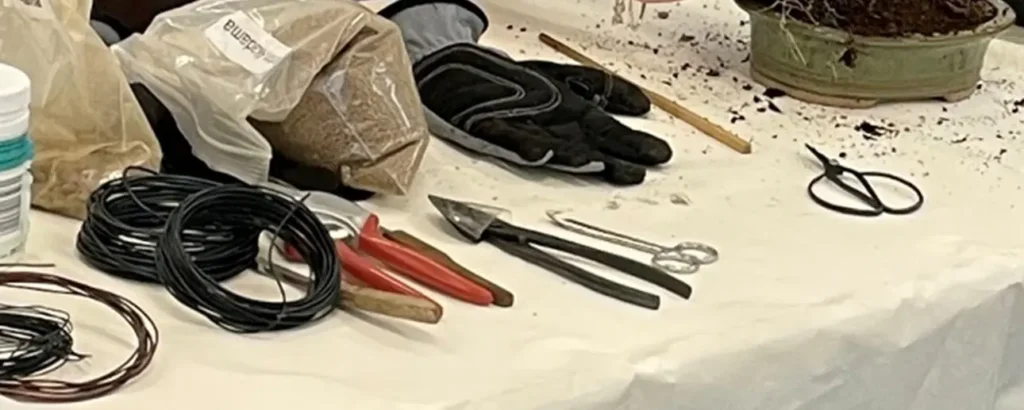
However, everything you need can be adapted from things you already have:
- Secateurs, nail clippers, scissors or serrated knife for pruning
- A kitchen fork for raking out soil
- Tweezers for twisting wire
- A chop stick (or other small stick) for tamping down the soil between the roots
- A screw or end of a teaspoon as a tiny spade
- Wire to support the trunk and to bend the branches into the form that you want.
- Growing Medium
When Linda first started she used garden soil as the growing medium. Linda also has had good results with John Innes No. 1. You can order specialist compost online as well as a range of soil-less growing media (akadama).
Location and Maintenance
All Linda’s trees are grown outside. It is much more difficult to keep bonsai trees healthy inside because they need to be kept warm and humid. Keep them in a shady part of the garden and it’s also worth raising them up on a bench or staging, partly to deter pests, but also to be able to see them better.
Different species of trees grow differently and will need to be pruned at different times of the year (depending on whether they are deciduous or not and when they tend to flower). In general, follow the best approach for their natural growing counterparts.
Bonsai tress also need repotting every 2 – 4 years but are usually replanted in the same pot after some root pruning and with fresh growing medium.
Useful Sites
Peter Chan is an acclaimed bonsai artist; his books are available from Herons Books
Kaizenbonsai.com is an online shop for all your bonsai-related needs and they also have some useful guides.
Bonsai supplies are widely available online (e.g., from Amazon).

